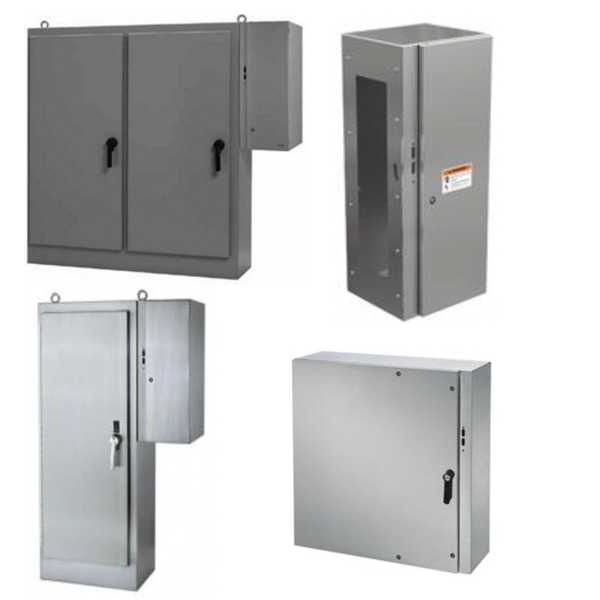Disconnect Enclosures

RSP Supply carries a full line of disconnect enclosures built for the safe housing and protection of disconnect switches, circuit breakers, and other electrical isolation components. Available in wall-mount, floor-mount, or free-standing configurations, these enclosures are constructed from durable materials such as mild steel, stainless steel, and fiberglass to suit any environment - from clean indoor installations to harsh outdoor or industrial settings.
Disconnect enclosures serve a critical role in electrical systems, allowing safe shutdown and isolation of power circuits for maintenance or emergency repairs. They are designed to meet demanding safety standards and are available in NEMA Type 3R, Type 4, and Type 4X ratings. This ensures reliable protection against dust, water, and corrosion, making them suitable for both indoor and outdoor applications, including industrial plants, commercial facilities, and utility sites.
These enclosures not only protect electrical components from external damage but also safeguard personnel by preventing accidental contact with energized parts. Many models feature lockable latches or advanced locking systems, mechanical or electronic, to prevent unauthorized access. The construction and finish are designed to withstand impacts, vibration, and exposure to environmental hazards, ensuring long service life and consistent performance.
Disconnect enclosures can accommodate fused or non-fused switches and circuit breakers, providing flexibility for a range of electrical system designs. Options include single-door and double-door configurations, removable panels, and hinge pin doors for quick access during installation or maintenance.
FAQs
Q: What materials are disconnect enclosures made from?
Disconnect enclosures are typically made from carbon steel, stainless steel, or fiberglass to ensure durability and corrosion resistance in various environmental conditions.
Q: What are NEMA Type 3R, 4, and 4X ratings?
NEMA 3R enclosures protect against rain and sleet for outdoor use, NEMA 4 enclosures provide watertight and dustproof protection, and NEMA 4X adds corrosion resistance - ideal for marine or chemical environments.
Q: Can a wall-mounted disconnect enclosure use hinge pin doors?
Yes. Hinge pin doors are commonly used in wall-mounted disconnect enclosures, allowing easy internal access while ensuring secure closure and safety.
Q: Are disconnect enclosures suitable for both fused and non-fused switches?
Yes. Disconnect enclosures are designed to accommodate both fused and non-fused switches, as well as circuit breakers, depending on the application requirements.
Q: What industries use disconnect enclosures?
Disconnect enclosures are widely used in manufacturing, utilities, construction, HVAC, and industrial automation; anywhere safe electrical isolation is required for maintenance or safety.
Why Buy Disconnect Enclosures from RSP Supply
RSP Supply offers a comprehensive selection of disconnect enclosures with fast shipping, competitive pricing, and expert support. Whether you need a compact wall-mount unit for a control panel or a large free-standing enclosure for heavy-duty industrial systems, RSP Supply provides the high-quality solutions your application demands.

